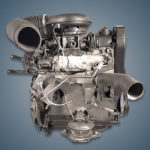The 3.0-liter Audi CGWB 3.0 TFSI gasoline engine was assembled at the factory from 2010 to 2012 and installed on all-wheel drive versions of the popular A6 and A7 models in the C7 body before restyling. There was also a more powerful version of this power unit under a different CGWD index.
The EA837 series includes: BDW, AUK, BDX, CAJA, CGWA, CGWB, CREC.
Specifications
| Production years | 2010-2012 |
| Displacement, cc | 2995 |
| Fuel system | direct injection |
| Power output, hp | 300 |
| Torque output, Nm | 440 |
| Cylinder block | aluminum V6 |
| Block head | aluminum 24v |
| Cylinder bore, mm | 84.5 |
| Piston stroke, mm | 89 |
| Compression ratio | 10.5 |
| Features | DOHC |
| Hydraulic lifters | yes |
| Timing drive | 4 chains |
| Phase regulator | on the intake shaft |
| Turbocharging | compressor |
| Recommended engine oil | 5W-30 |
| Engine oil capacity, liter | 6.5 |
| Fuel type | petrol |
| Euro standards | EURO 5 |
| Fuel consumption, L/100 km (for Audi A6 2011) — city — highway — combined |
10.8 6.6 8.2 |
| Engine lifespan, km | ~260 000 |
The engine was installed on:
- Audi A6 C7 (4G) in 2010 – 2012;
- Audi A7 C7 (4G) in 2010 – 2012.
Disadvantages of the Audi CGWB engine
- The main problem of all units of this series is increased oil consumption;
- The reason for the oil burner is scuffing due to the ingress of catalyst crumbs into the cylinders;
- Also, the chain is cracking here, since there are no check valves for the cylinder head oil channels;
- Another culprit in the noise of the timing chains is the heavy wear of the hydraulic tensioners;
- Other weak points of the engine: pump, injection pump, and muffler corrugations often burn out.






